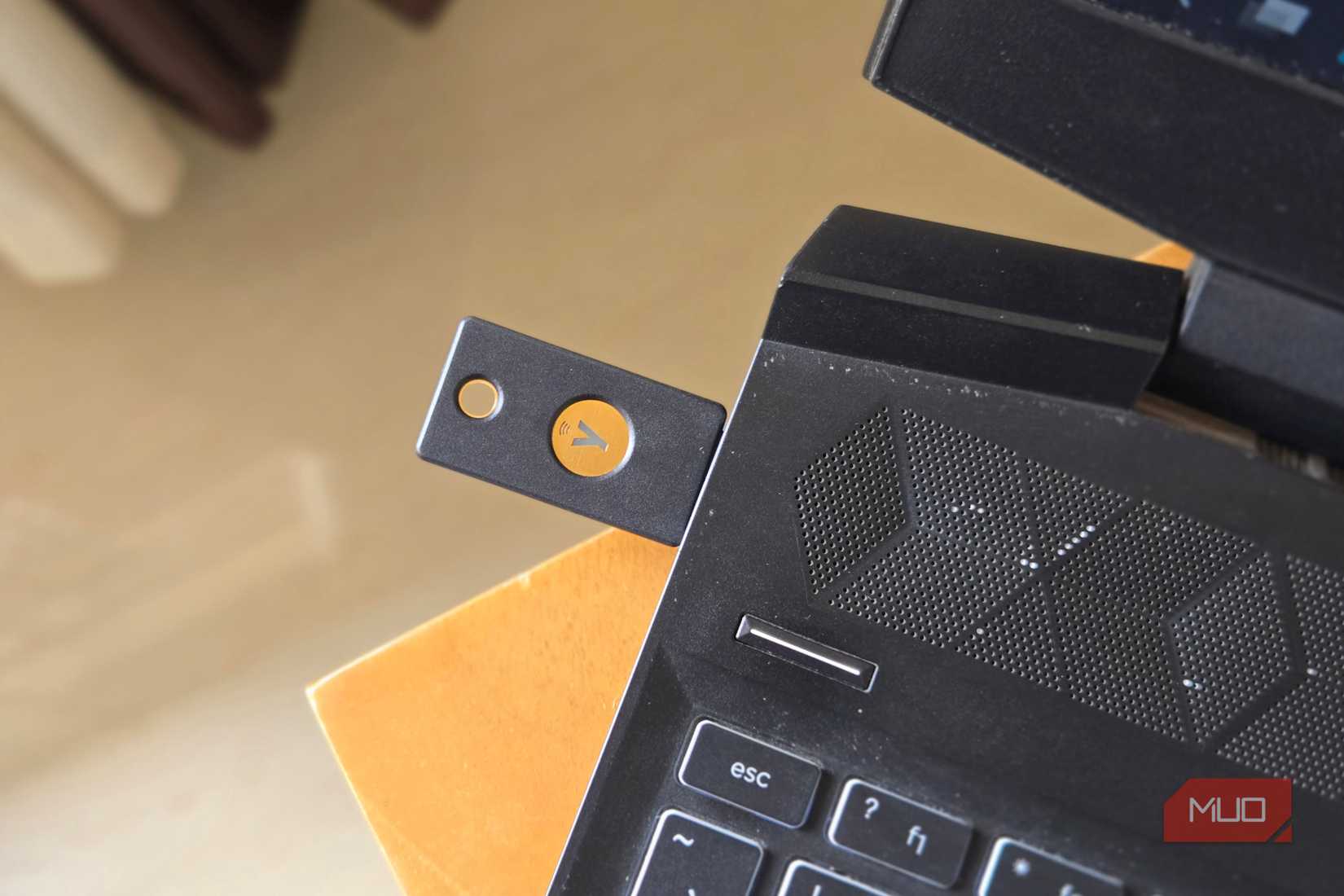I have all but moved on from password to passkeys, where possible, as a safer alternative to typing a long string of characters. But there’s a caveat: if someone gains physical access to your computer and knows your PIN, they can access all your passkey-protected accounts without any additional authentication.
Personally, I prefer using a YubiKey security key to secure my login accounts. However, if you don’t want to splurge on a dedicated hardware key, you can turn your humble USB flash drive into a security key using USB Raptor.
Why should you use a physical unlock key?
Adding a physical layer to digital security
A Windows PIN or password feels secure until someone shoulder-surfs you while typing it. Or until a family member who knows your PIN decides to snoop around. That’s where a physical key acts as a second layer of authentication.
USB Raptor is a free Windows utility that can turn any USB flash drive into a secure key to lock and unlock your computer. When you set up USB Raptor, it creates a unique, encrypted k3y file on your USB drive. This file contains a cryptographic identifier that’s specific to your computer and the USB drive. The utility then runs in the background, checking every few seconds to see if the USB drive with the correct k3y file is still plugged in.
The moment you pull out the USB, USB Raptor detects the missing k3y file and triggers a lock command. Your screen goes dark, and a lock screen appears that can’t be bypassed without either reinserting the USB or entering your backup password.
Creating a USB security key works great in shared spaces. Whether you’re working in an open office, using a computer in a dorm, or just stepping away from your desk at home, pulling out a USB stick is a simple habit that ensures no one goes snooping without your knowledge.
Turn your USB flash drive into a security key using USB Raptor
Converting any USB stick into a smart key
To get started, you need a USB flash drive. Also, back up any important data from the drive. Then download USB Raptor and extract it to any location on your computer.
When you launch USB Raptor, it asks you to set an encryption password. Enter a password and note it down somewhere safe—you’ll need it if you ever want to recreate your k3y on a different USB drive. Insert your USB flash drive, and let USB Raptor detect it automatically. Thenclick Create k3y file to generate the encrypted authentication file on your USB drive.
But what if you forget the password and don’t have access to your USB drive? USB Raptor offers a clever backdoor access feature.
Under Advanced Configuration, open the Lock Features tab. In the Backdoor access section, click Generate RUID file, then save the emergency access file somewhere secure. If your USB drive fails or gets lost, this cryptographic file can still unlock your computer.
Once configured, USB Raptor works as intended. Pull out the USB, and your computer locks after a customizable delay. Plug it back in, and you’re instantly back at your desktop.
The app starts with Windows and runs quietly in the system tray, and uses minimal system resources. You can even configure different lock behaviors, ranging from a simple Windows lock screen to a full USB Raptor security screen that’s harder to bypass.
USB Raptor lets you customize everything from lock delays to unlock sounds. You can also password-protect the USB Raptor interface itself to prevent anyone from disabling it without your permission.
It’s not true hardware security
Things to consider when using USB Raptor
While USB Raptor adds meaningful security, it’s not foolproof like a proper hardware security key from Yubico. A YubiKey or similar device uses cryptographic chips designed specifically for security. USB Raptor relies on software running on Windows, which means someone with sufficient technical knowledge and physical access could potentially bypass it.
There have been reports of occasional issues where USB Raptor refuses to unlock even with the correct USB and password. Then there are instances where the password mysteriously resets to Default. While the issues may be a rare occurrence, it’s important to keep that RUID backup file handy and consider USB Raptor as an extra security measure on top of your existing PIN or password.
USB Raptor also can’t protect against someone who boots from a different drive or removes your hard drive entirely. For that level of security, you’d need full-disk encryption like BitLocker, combined with a TPM chip. But for preventing casual snooping and adding a quick physical security to your login process, it does the job well.
USB Raptor adds a layer of security for free
USB Raptor won’t replace a proper hardware security key for protecting your online accounts, but it solves a different problem. It turns any spare USB stick into a physical key for your computer, adding friction for anyone trying to access your system when you’re not around.
And unlike a dedicated hardware key that’ll set you back at least $50, USB Raptor can turn even an old 2GB flash drive into a security key. For the price of free and five minutes of setup time, you get a physical security token that makes unauthorized access significantly harder.



